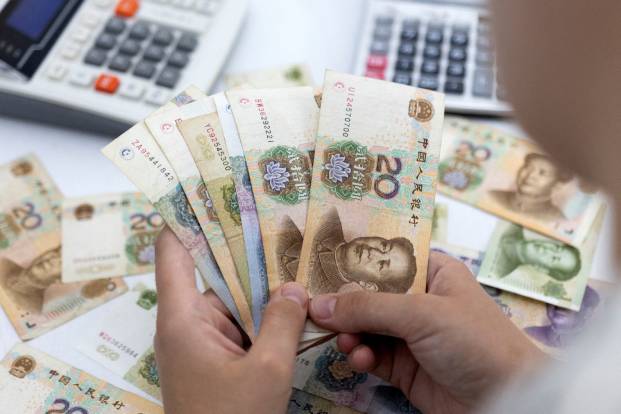China’s central bank announced on Monday that it will cut the amount of foreign exchange reserves that banks and financial institutions must hold.
The move is seen as aimed at slowing the depreciation of the yuan, which has been plunging against the dollar and is close to the psychologically significant 7-per-dollar mark.
The People’s Bank of China said it would cut the foreign exchange reserve requirement ratio (RRR) by 200 basis points (bps) to 6% from 8% beginning September 15, an online statement said.
The PBOC previously cut the FX reserve requirement ratio for financial institutions by 100 basis points in April, in a bid to rein in the sliding yuan and make it less expensive for banks to hold dollars.
The yuan fell to a more than two-year low against the dollar on Monday, amid reports of a dip in exports and Covid lockdowns in two key business hubs.
Concern about greater disruption to economic activity are linked to Shenzhen, the southern tech centre, where officials have said they will bring in tiered anti-virus restrictions from Monday, and Chengdu in the southwest, which also said that lockdown restrictions affecting 21 million citizens would be extended.
Prior to the market opening, the People’s Bank of China (PBOC) set the midpoint rate at 6.8998 per dollar, 81 pips weaker than the previous fix of 6.8917.
Monday’s fixing marked the ninth straight trading day that the PBOC set firmer-than-expected official guidance and prompted many market watchers to speculate there is an official effort to rein in excess yuan weakness.
ALSO SEE: Fresh snap lockdowns put China’s economic recovery in peril
Dollar Strength
Tommy Xie, head of Greater China research at OCBC Bank, said the recent firmer-than-expected fixings reinforced “the view that China has a strong incentive to slow down the pace of RMB depreciation as part of sentiment management amid the rising uncertainty from the property mess and Covid situation.”
In the spot market, onshore yuan opened at 6.9155 per dollar and fell to a low of 6.9350, the weakest level since August 17, 2020. By midday, it was changing hands at 6.9319, 304 pips softer than the previous late-session close.
Several currency traders said the yuan decline in morning deals was a reaction to strength in the dollar, which hit a two-decade high against its major trading partners.
Markets also heatedly discussed whether the rising dollar and domestic economic slowdown would pressure the yuan to hit the psychologically important 7-per-dollar level.
“Pressure for CNY likely remains in near-term, we are seeing USD/CNY to reach 7.00 in the near-term,” Li Lin, head of global markets research for Asia at MUFG Bank, said.
Li noted that August trade data due on Wednesday could serve as one of the market movers for the yuan this week.
By midday, the global dollar index rose to 109.97 from the previous close of 109.534, while offshore yuan was trading at 6.9429 per dollar.
- Reuters with additional editing by Jim Pollard
NOTE: This report was updated and the headline altered on Sept 5, 2022 when news emerged about the PBOC’s change in regard to banks’ FX reserves.
ALSO SEE:
China Think Tank Urges Scrapping of ‘Zero Covid’ Policy – AP
Concern on Impact of Covid Curbs in China’s Big Business Hubs
China Shuts World’s Biggest Electronics Market Due to Covid
IMF Urges China Rethink on Zero-Covid, Property Crisis
























